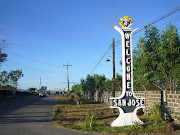The
grandest event in Mindoro Island’s history after World War-II was its disunion into
two provinces. The division of the two coasts gave birth to both Oriental and
Occidental Mindoro. That time, there were no transportation connecting east
and west coasts therefore the political administration from Calapan, which is
Mindoro Province’s capital then, was very hard, time-consuming and costly. This
marked the birth of both Oriental Mindoro and Occidental Mindoro.
The
Philippine Congress passed Republic Act 505 officially dividing the island into
two provinces and in inaugural ceremony held on November 15, 1950 in Calapan,
the formal transfer of all official functions materialized. RA 505 was approved
on June 13, 1950 by President Elpidio Quirino and was finally penned into law on November 15 on that same
year. This is the fruition of HB No. 640 sponsored by the then lone province’s
representative Cong. Raul T. Leuterio.
But
according to Volker Schult in p. 116 of his book “Mindoro : A Social History of
a Philippine Island in the 20th Century” published by the Divine Word Publications
1991, “He (Leuterio) paid back the
political loyalty the Abeledas had been giving him since the pre-war period.
Leuterio supported the Abeledas to gain political domination in the province of
Occidental Mindoro.” During those days, political power is exclusive to
certain elites in society or political factions, not unlike today.
Expectedly,
Damaso Abeleda was appointed governor from November 15, 1950 to December 31,
1951. But our first elected governor was Federico Castillo (1952-1955), while
Jesus T. Abeleda (1951-1953) became the first congressman of Occidental
Mindoro. Occidental Mindoro will be celebrating its 67th founding
anniversary this Wednesday.
As
I have mentioned, there was a ceremony held in Calapan and in the following
day, a similar ceremony was held in San Jose. The latter, in case you do not
know, was the first capital town of Occidental Mindoro until a group of
influential citizens and families started a campaign pushing for Mamburao as
the new capital. With their political influence and clouts, the move succeeded.
Since January 1, 1951 up to present, Mamburao has been the capital of our
province where the stronghold of said elites can be found. Mamburao, the capital town, by the way, was not included in 5 Occidental Mindoro municipalities vested with the prestigious Seal of Good Local Governance (SGLG) Award by DILG. For 7 years now since it was launched as Seal of Good Housekeeping in 2010, SGLG has been a vehicle that drives the LGUs to aspire for better programs and policies.
Truth
to tell, debt of gratitude in politics is part of our province’s infantile period
in history as attested by the events prior to the separation of Occidental
Mindoro from its western-side twin. Those days of political exclusivity, where
the elite politicians take the centre stage and the “nameless” and “unknown” public
servants are left without any chance in terms of governance.
The
provincial political leadership in the province been dominated by two camps of
political titans for nearly 3 decades now. The occasion's theme is, "Reaching Progress in 2017".
God gave us 67 years to correct those but gerrymandering of old haunts us still to this very day.
God gave us 67 years to correct those but gerrymandering of old haunts us still to this very day.
-----
(Photo grabbed from Jasmine Marcelo's Facebook account)







I wonder if there would be a chance for both provinces to unite one day. But, yeah considering the political families, their own interests, it would be near impossible for that to happen.
ReplyDelete